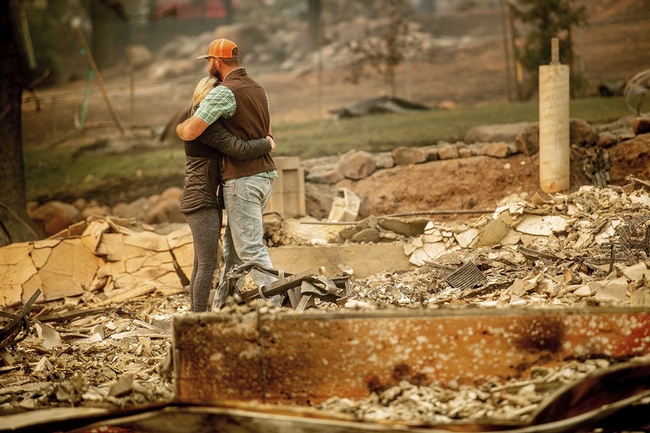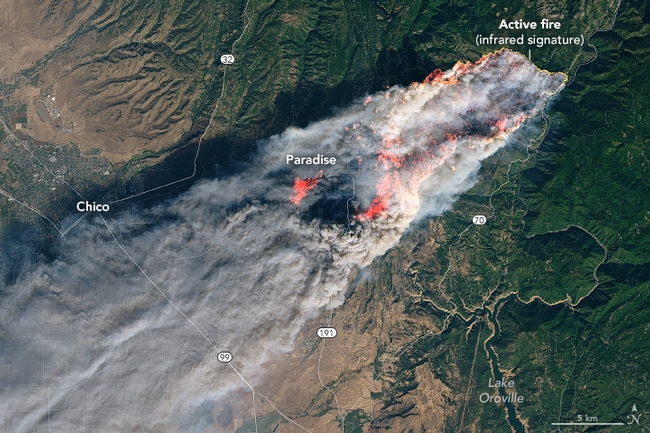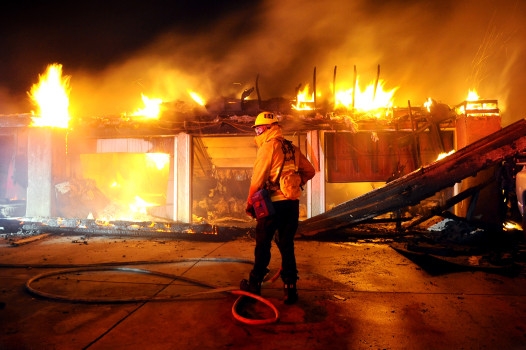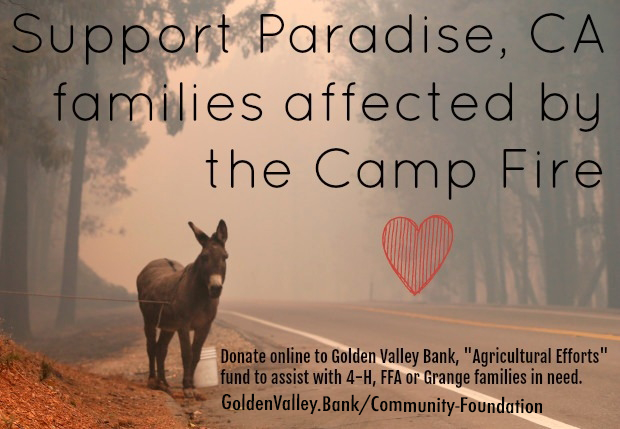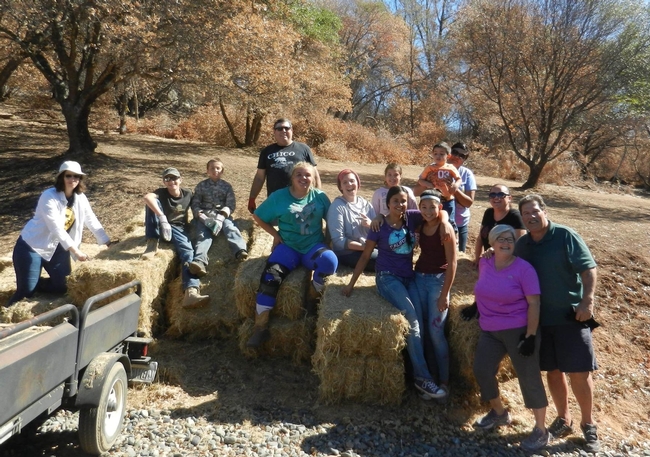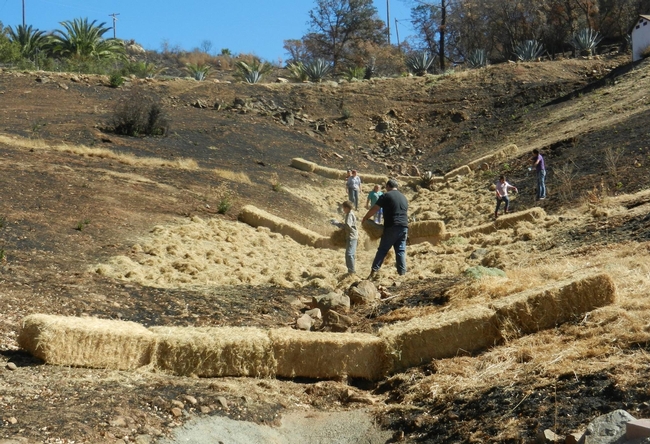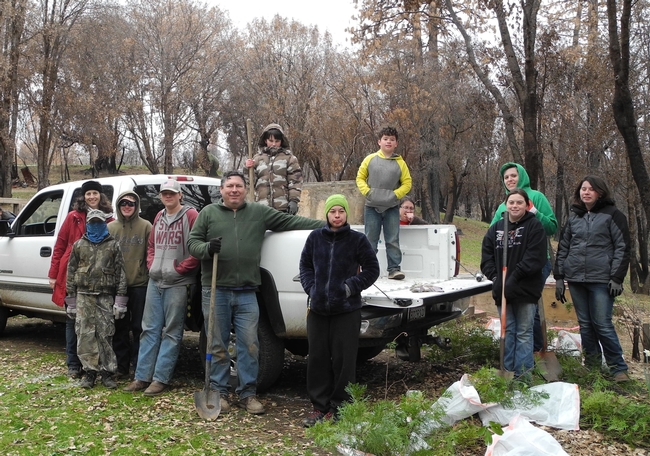
- Author: Jenna Colburn
The past few years California and the nation have faced devastating natural disasters. When we see images of devastation and loss on the news and Internet our first instinct is to mobilize, organize, and help those that are in need.
In the past week California has been hit hard again with wildfires in Butte, Los Angeles and Ventura counties. Currently the brave first responders are still fighting to contain those fires.
Recovery from a catastrophic loss is a marathon, not a sprint.
After the fires are out, there will be a long road to recovery. Fire survivors may go back to survey their properties, but on top of insurance claims and rebuilding decisions, they have to address their immediate needs for shelter. Survivors will need support throughout the long process.
As noted in a Sacramento Bee article, thirteen months ago fires in Sonoma County destroyed about 5,300 homes, including about 2,000 in unincorporated Santa Rosa. Since then, only 598 permits have been issued to rebuild single family homes and only around 30 homes have been rebuilt in the unincorporated areas.
What you can do to help
Map out a plan
If you collect 1000 blankets, who will you give them to and how will you get them where they need to be? Are blankets what are really needed? The only way to answer these questions is to have a good plan with plenty of support in place BEFORE you start your project. This will ensure that your efforts to make a difference will be successful and sustainable.
Contact organizations that are able to accept goods BEFORE you start collecting items. Organizations have different needs at different times during disaster recovery efforts. Unsolicited donated goods such as used clothing, household items, and mixed foodstuff require agencies to redirect their valuable resources away from providing relief services. They will have to sort, package, transport, warehouse, and distribute items that may not even meet the needs of disaster survivors.
Instead: Use the Service Learning Toolkit and Project Planning Guide to help you plan a disaster relief project.
Find reputable local organizations to support
The best way to help in disaster areas is to support relief organizations that are already established in the area.
Some ways to verify relief organizations:
- Give.org- the BBB Wise Giving Alliance
- The State Of California has vetted both volunteer opportunities and organizations that are supporting relief efforts. CaliforniaVolunteers is the state office that manages programs and initiatives aimed at increasing the number of Californians engaged in service and volunteering. Their Current Disasters webpage links to resources for current information on disaster areas in California.
As an individual, you can make personal monetary donations to organizations to support relief efforts.
There are many organizations that are accepting cash donations. The Golden Valley Bank Foundation has set up a fund to directly support 4-H, FFA and Grange members and their families affected by the Camp Fire.
Know our 4-H policy on fundraising and donating to non-profit organizations.
4-H clubs cannot donate cash or fundraise for other non-profit organizations. Please familiarize yourself with the following documents for more clarification:
- Guidelines for Fundraising by 4-H Units and VMOs to Benefit Groups or Organizations
- FAQs for 4-H Units & VMOs - Fundraising to Benefit Groups or Organizations
Create a sustainable Service Learning Project to support disaster relief
With a Service Learning Project, you will participate in the development of community partnerships and share responsibility with community members. You will also take an active role in improving society and improving the quality of life in the community.
Our own 4-H clubs have helped with fire recovery efforts.
Oroville Foothill 4-H Club's fire recovery project was shared in a blog post by 4-H member Donovan Hill.
Use the Service Learning Toolkit and Project Planning Guide
The Service Learning Toolkit and Project Planning Guide can help you plan your disaster relief project.
Evaluate your plan to ensure it is High Service/High Learning using the Standards of Quality in Service Learning. This 10 question checklist will help you determine how to make this a positive learning experience that benefits the community at the same time.
This original blog post from 9/1/17 was updated and edited to include current information. Jenna Colburn is the Program Coordinator for Civic Engagement. If you have any questions regarding creating a service learning project, please contact Jenna at jcolburn@ucanr.edu.
- Author: Emily Jackson
Siskiyou County is one of California's most rural counties. Forest fires and other natural disasters are often a concern for our communities. Many of our residents own pets and livestock, but we lack the agency resources to help with pet/livestock emergency evacuation.
With fire season already starting, Siskiyou County's Hi 4-H project wanted to help people prepare for emergency evacuations that included plans for pets and livestock. It was important that we inform the public about how to prepare for a disaster. To do this, we created PEEP (Pet Emergency Evacuation Plan) pamphlets.
The main objective of this project was to inform and teach 4-Hers and the public about how to keep pets and livestock safe in case of evacuation. We worked with Siskiyou County's Animal Control and used resources from the Office of Emergency Services (OES) while we researched on our own in preparation for this project. We learned about important things to have prepared if animals need to be evacuated, and what to do if animals need to be left behind or let loose. In our pamphlets, we included information about how to evacuate small and large animals, important items to have prepared in case of an emergency, and the importance of pre-planning.
How we're sharing the information
Our pamphlets will be handed out at the Siskiyou Golden Fair and a PDF version will be available on our county's Animal Control and Office of Emergency Services (OES) websites. We have also given presentations on our project and supplied information pamphlets to local 4-H clubs, as well as shared our project with attendees of this year's California Focus conference.
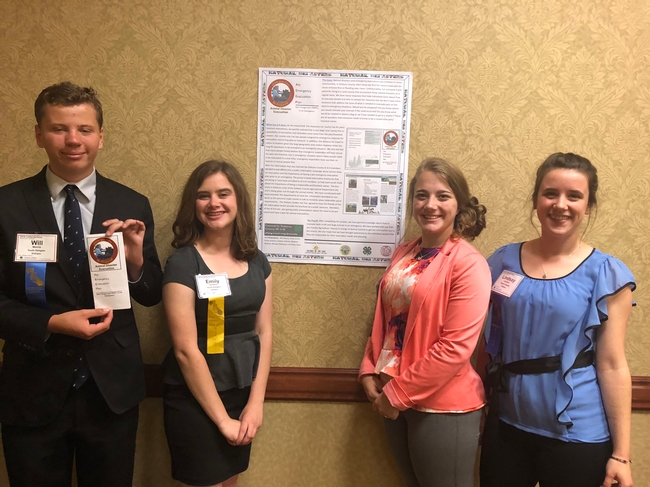
After completing this project, we have gained knowledge about how to evacuate both large and small animals and we know that it is our responsibility to make sure we have a plan. Our animals are counting on us. We hope that our project will help 4-Hers and members of our community be prepared for future disasters.
Don't forget your PEEP's in an emergency!
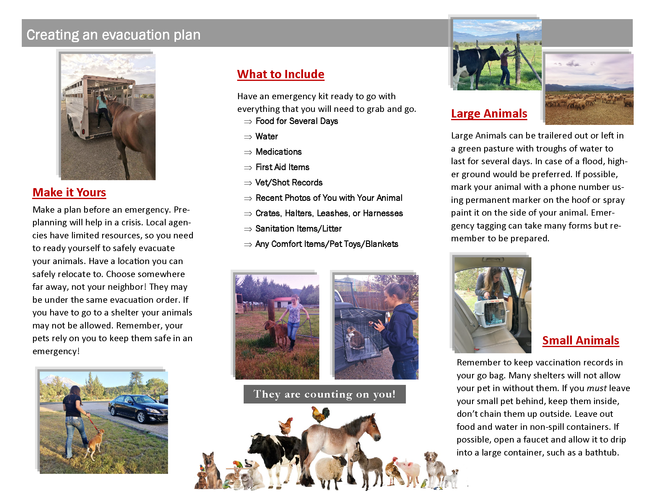
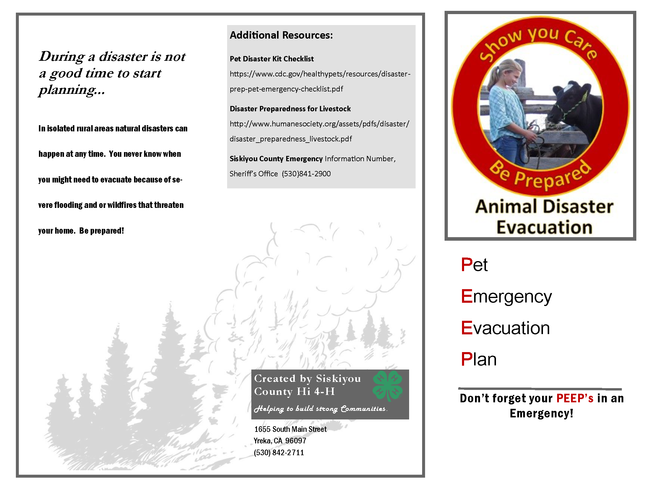
Download a copy of the pamphlet
- Author: Donovan Hill
Who wouldn't want to spend a week at a hotel with a pool? Until last August, I never could have imagined feeling anything but relaxation and happiness at a hotel. But when the Ponderosa Fire started near our family ranch in Feather Falls, my parents, grandparents and I found ourselves evacuated, sitting in our hotel rooms with only the clothes we had been wearing the day the fire started. For more than a week, we waited inside with the windows shut against the smoke, trying not to worry.
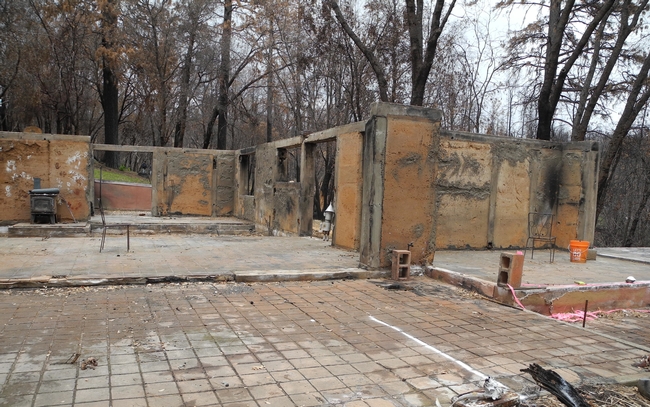
My family was very lucky to be able to evacuate and very fortunate that CalFire was able to stop the fire about 900 feet from our ranch. When we finally drove home, we were shocked to see the devastation in our mountain community. We immediately wanted to do something to help.
Every member of our 4-H Club also had been affected directly or indirectly by the wildfires of 2017.
Oroville Foothill 4-H Fire Recovery Project
We decided to create a Fire Recovery Project in Oroville Foothill 4-H Club and invite all 4-H Clubs in Butte County to join us.
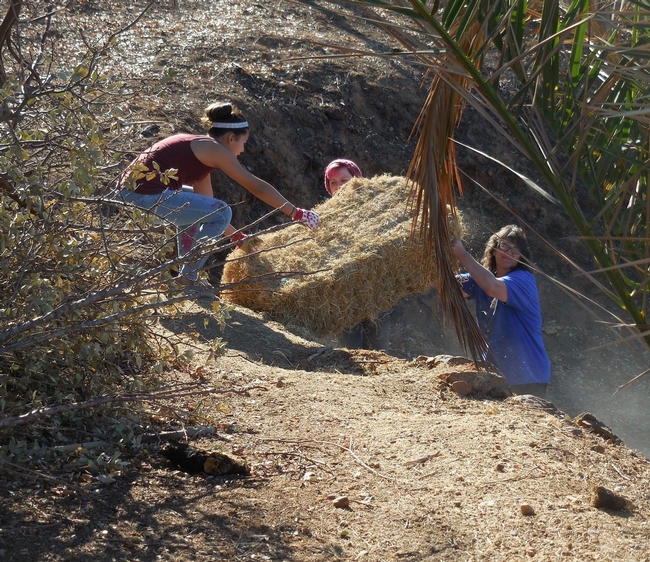
Kickoff event: Erosion Control Project
For our kickoff event on October 14, 2017, we volunteered to help the Yankee Hill Fire Safe Council on an erosion control project in the Wall Fire. We visited three properties and spread rice straw on some steeper slopes to prevent soil erosion and mudslides. The homeowners were thrilled with the help and materials they received.
Spring project: Tree Planting
For the spring, Oroville Foothill 4-H Fire Recovery Project planned three tree-planting dates in early 2018. Then, we discovered that there is a shortage of tree seedlings because of all the fires in California this year. After talking to families at the Mountain Springs Grange in Feather Falls who had received some fir and pine seedlings, but no other native trees, we realized that we have thousands of small cedar and other conifer “wildlings” on our ranch that we could transplant to neighboring properties that burned.
On February 24, 2018, we transplanted 300 cedars to Bruce and Leslie Steidl's place that burned in the Ponderosa Fire. During a lunch break, Leslie Steidl talked to us about women in science and her career as a geologist and archaeologist. We learned that the land we replanted has been occupied by people for at least 6000 years.
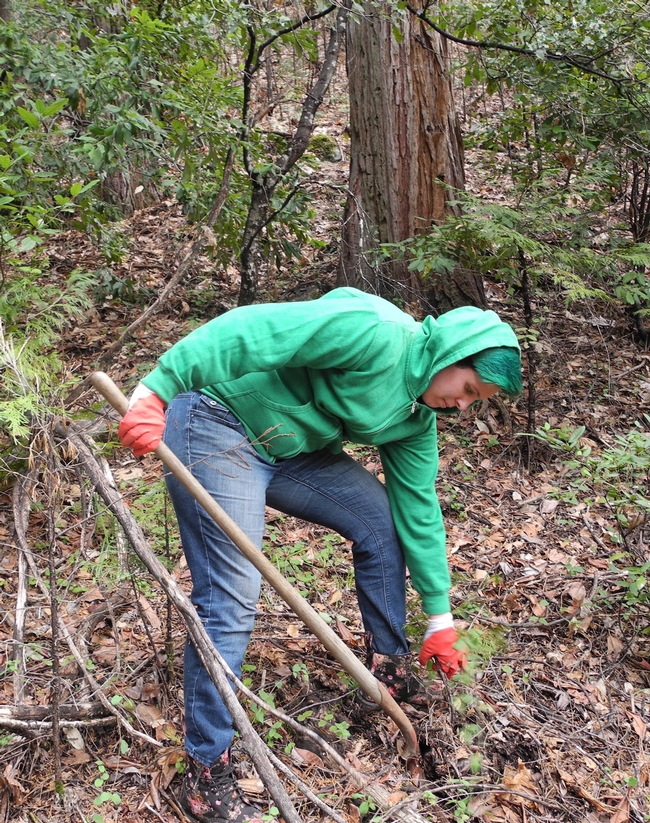
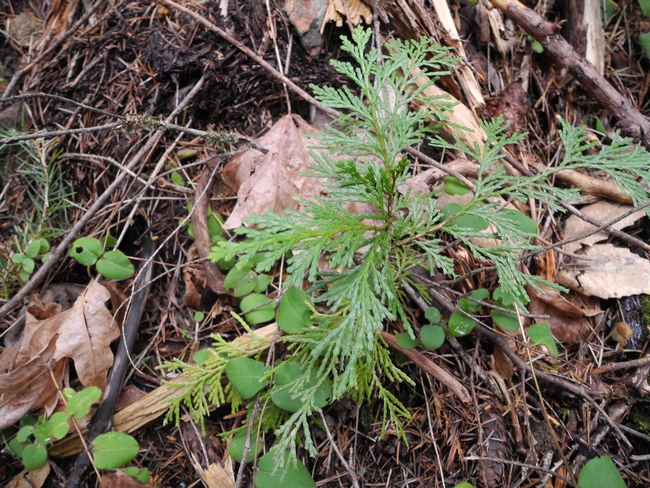
Join Oroville Foothill 4-H's Fire Recovery Project!
Oroville Foothill 4-H also is extending invitations to other service organizations to join us in the Fire Recovery Project, including Boy Scouts, Sea Cadets and the YMCA. The more volunteers we have, the more we can do to help our communities recover from the devastation of the wildfires of 2017.
We look forward to many years of watching our local forests grow and return to the beautiful life-supporting ecosystem that we enjoy.
For more information about the 4-H Youth Develpment Program in Butte County, please contact 4-H Program Representative Nicole Marshall-Wheeler at nmarshall@ucanr.edu.
